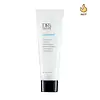What's inside
What's inside
 Key Ingredients
Key Ingredients

 Benefits
Benefits

 Concerns
Concerns

 Ingredients Side-by-side
Ingredients Side-by-side

Water
Skin ConditioningTea-Lauryl Sulfate
CleansingAcrylates/Steareth-20 Methacrylate Copolymer
Cocamide DEA
EmulsifyingCocamidopropyl Betaine
CleansingButylene Glycol
HumectantPolysorbate 20
EmulsifyingMethyl Gluceth-20
HumectantPanthenol
Skin ConditioningAloe Barbadensis Leaf Juice
Skin ConditioningSodium Hydroxide
BufferingGlycerin
HumectantMaltodextrin
AbsorbentTetrasodium EDTA
Simmondsia Chinensis Seed Oil
EmollientChamomilla Recutita Extract
Skin ConditioningHedera Helix Extract
AntimicrobialAscorbic Acid
AntioxidantParfum
MaskingPhenoxyethanol
PreservativeChlorphenesin
AntimicrobialCI 16035
Cosmetic ColorantWater, Tea-Lauryl Sulfate, Acrylates/Steareth-20 Methacrylate Copolymer, Cocamide DEA, Cocamidopropyl Betaine, Butylene Glycol, Polysorbate 20, Methyl Gluceth-20, Panthenol, Aloe Barbadensis Leaf Juice, Sodium Hydroxide, Glycerin, Maltodextrin, Tetrasodium EDTA, Simmondsia Chinensis Seed Oil, Chamomilla Recutita Extract, Hedera Helix Extract, Ascorbic Acid, Parfum, Phenoxyethanol, Chlorphenesin, CI 16035
Water
Skin ConditioningParaffinum Liquidum
EmollientCetyl Ethylhexanoate
Emollient1,2-Hexanediol
Skin ConditioningCetyl Alcohol
EmollientPolysorbate 60
EmulsifyingDimethicone
EmollientSorbitan Sesquioleate
EmulsifyingGlyceryl Stearate
EmollientPEG-100 Stearate
Butylene Glycol
HumectantCaprylyl Glycol
EmollientCarbomer
Emulsion StabilisingSodium Stearoyl Glutamate
CleansingTriethanolamine
BufferingCitrus Limon Peel Oil
MaskingLactobacillus
Skin ConditioningLactobacillus/Punica Granatum Fruit Ferment Extract
Skin ConditioningEthylhexylglycerin
Skin ConditioningDisodium EDTA
Glycerin
HumectantApium Graveolens Root Extract
Skin ConditioningBrassica Oleracea Capitata Leaf Extract
Skin ConditioningBrassica Oleracea Italica Extract
AstringentBrassica Rapa Leaf Extract
Skin ConditioningDaucus Carota Sativa Root Extract
Skin ConditioningOryza Sativa Extract
AbsorbentSolanum Lycopersicum Fruit Extract
AntioxidantPentylene Glycol
Skin ConditioningLecithin
EmollientSodium Phosphate
BufferingPEG-40 Hydrogenated Castor Oil
EmulsifyingPPG-26-Buteth-26
Skin ConditioningPalmitoyl Tripeptide-1
Skin ConditioningCopper Tripeptide-1
Skin ConditioningSh-Oligopeptide-1
Skin ConditioningPhenoxyethanol
PreservativeWater, Paraffinum Liquidum, Cetyl Ethylhexanoate, 1,2-Hexanediol, Cetyl Alcohol, Polysorbate 60, Dimethicone, Sorbitan Sesquioleate, Glyceryl Stearate, PEG-100 Stearate, Butylene Glycol, Caprylyl Glycol, Carbomer, Sodium Stearoyl Glutamate, Triethanolamine, Citrus Limon Peel Oil, Lactobacillus, Lactobacillus/Punica Granatum Fruit Ferment Extract, Ethylhexylglycerin, Disodium EDTA, Glycerin, Apium Graveolens Root Extract, Brassica Oleracea Capitata Leaf Extract, Brassica Oleracea Italica Extract, Brassica Rapa Leaf Extract, Daucus Carota Sativa Root Extract, Oryza Sativa Extract, Solanum Lycopersicum Fruit Extract, Pentylene Glycol, Lecithin, Sodium Phosphate, PEG-40 Hydrogenated Castor Oil, PPG-26-Buteth-26, Palmitoyl Tripeptide-1, Copper Tripeptide-1, Sh-Oligopeptide-1, Phenoxyethanol
 Reviews
Reviews

Ingredients Explained
These ingredients are found in both products.
Ingredients higher up in an ingredient list are typically present in a larger amount.
Butylene Glycol (or BG) is used within cosmetic products for a few different reasons:
Overall, Butylene Glycol is a safe and well-rounded ingredient that works well with other ingredients.
Though this ingredient works well with most skin types, some people with sensitive skin may experience a reaction such as allergic rashes, closed comedones, or itchiness.
Learn more about Butylene GlycolGlycerin is already naturally found in your skin. It helps moisturize and protect your skin.
A study from 2016 found glycerin to be more effective as a humectant than AHAs and hyaluronic acid.
As a humectant, it helps the skin stay hydrated by pulling moisture to your skin. The low molecular weight of glycerin allows it to pull moisture into the deeper layers of your skin.
Hydrated skin improves your skin barrier; Your skin barrier helps protect against irritants and bacteria.
Glycerin has also been found to have antimicrobial and antiviral properties. Due to these properties, glycerin is often used in wound and burn treatments.
In cosmetics, glycerin is usually derived from plants such as soybean or palm. However, it can also be sourced from animals, such as tallow or animal fat.
This ingredient is organic, colorless, odorless, and non-toxic.
Glycerin is the name for this ingredient in American English. British English uses Glycerol/Glycerine.
Learn more about GlycerinPhenoxyethanol is a preservative that has germicide, antimicrobial, and aromatic properties. Studies show that phenoxyethanol can prevent microbial growth. By itself, it has a scent that is similar to that of a rose.
It's often used in formulations along with Caprylyl Glycol to preserve the shelf life of products.
Water. It's the most common cosmetic ingredient of all. You'll usually see it at the top of ingredient lists, meaning that it makes up the largest part of the product.
So why is it so popular? Water most often acts as a solvent - this means that it helps dissolve other ingredients into the formulation.
You'll also recognize water as that liquid we all need to stay alive. If you see this, drink a glass of water. Stay hydrated!
Learn more about Water